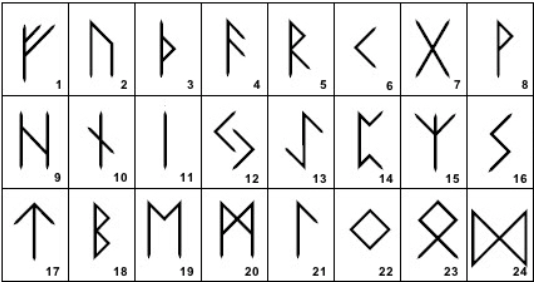
- Runes make up what is known as the Old Norse alphabet, which is also called the futhark (“futhark” being the pronunciation of the first six runes in the alphabet).
- Runes are thought to have originated during the 1st century CE.
- Each of the early Germanic civilizations (such as Anglo-Saxons and Frisians) used different variations of the Old Norse.
- The Scandinavian version is what is now known as Elder Futhark, consisting of 24 letters divided into three groups called ættir.

- By the 9th century, Elder Futhark had been reduced from 24 letters to 16 letters. This version is known as Younger Futhark, and is the version that the Vikings used.
- Some known inscriptions also use the Short-Twig version of the Younger Futhark, which was simpler and easier to write.
- Certain later versions of Younger Futhark added new letters for certain sounds such as the G sound.

